An overview of the largest snails in the world
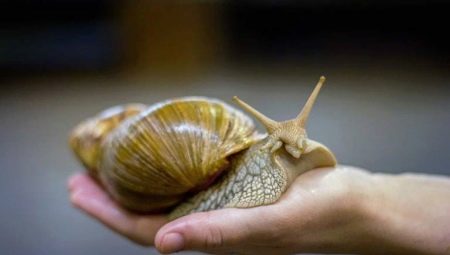
Increasingly, snails appear in the homes of fans of exotic animals. Small specimens are gradually losing popularity, and they are being replaced by large domestic species. Before you understand what the features of caring for large snails are, it is important to study the information on the largest species.
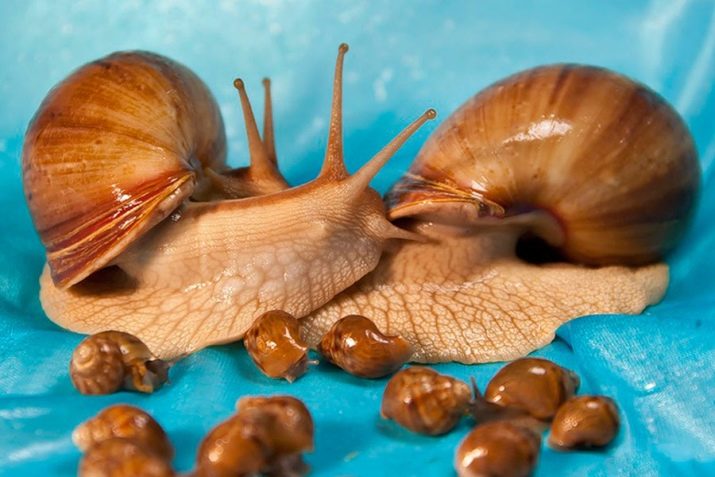
Peculiarities
These unusual molluscs are of interest to aquarists not only for their exotic appearance, but also for their unpretentious care. They do not require difficult living conditions or expensive feed. If it is a giant snail, it is recommended to keep only one individual. The main feature of large species lies in their size, because individual specimens can reach the size of a small cat, so they can become a full-fledged pet.
Snails can be classified into terrestrial and marine species, with both small species and giant snails in each group. Different peoples at all times perceived large snails differently. For example, in Babylon and Egypt, these animals were a symbol of eternity because of the spiral shell. But in Europe they were declared the personification of sin and human laziness.

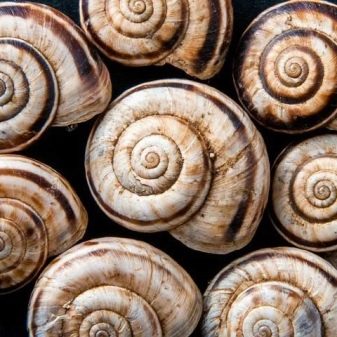
Overview of large species
Rumina decollata
A very interesting animal, although it does not pull the title of giant, because its length rarely exceeds 5 cm. It is a herbivorous snail that prefers to lead a night life, and gets out into the air during the day only in cloudy weather. It hibernates for the winter. Has an unusual shell in the form of a truncated cone.
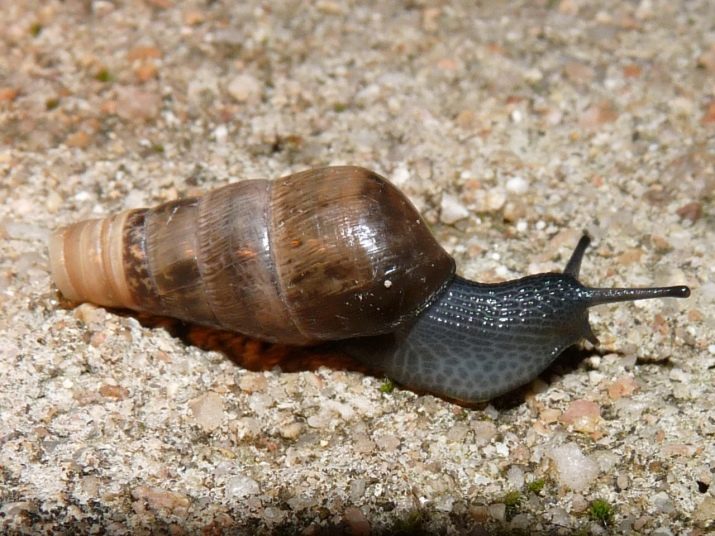
Grape snail
It belongs to the largest European land species. Sometimes you can see this variety in Russia. Sink sizes vary from 3 to 5 cm.In winter, these snails sleep, and the rest of the time they prefer to feed on plants. This species is often eaten.
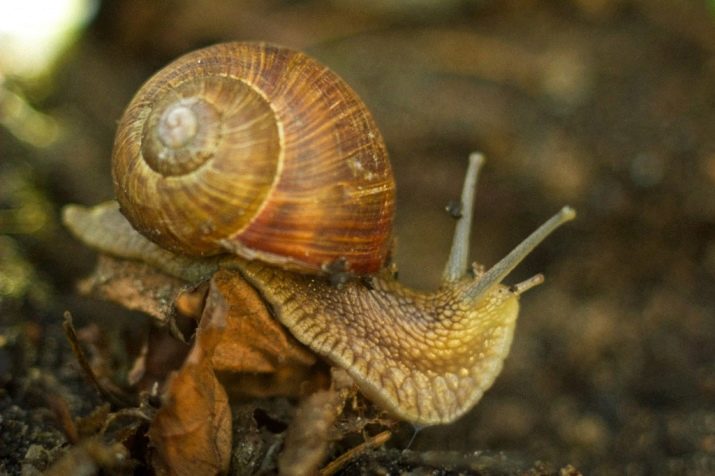
Caracolus sagemon
A woody land snail, reaching a length of 9 cm. Despite its terrestrial lifestyle, this mollusk will not refuse to swim. The dark carapace of this species is decorated with spiral-shaped stripes that create a saucer-like appearance, which is why the caracolus is sometimes called the saucer snail.
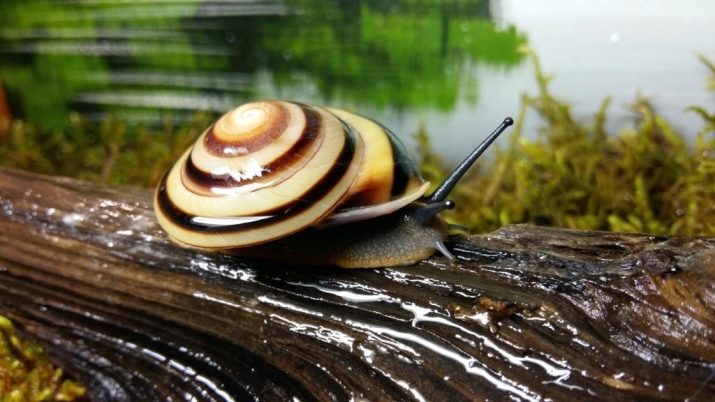
Limicolaria flammea
It is the most sought-after species in the world of the aquarium hobby. The limycolaria snail has a very interesting appearance and does not require serious care, for which it is popular. In length, its size is limited to 7 cm. There are individuals with a pink, black or brown shell, there are also albinos.
The only requirement for the content of the shellfish is water at room temperature not lower than 25 degrees.
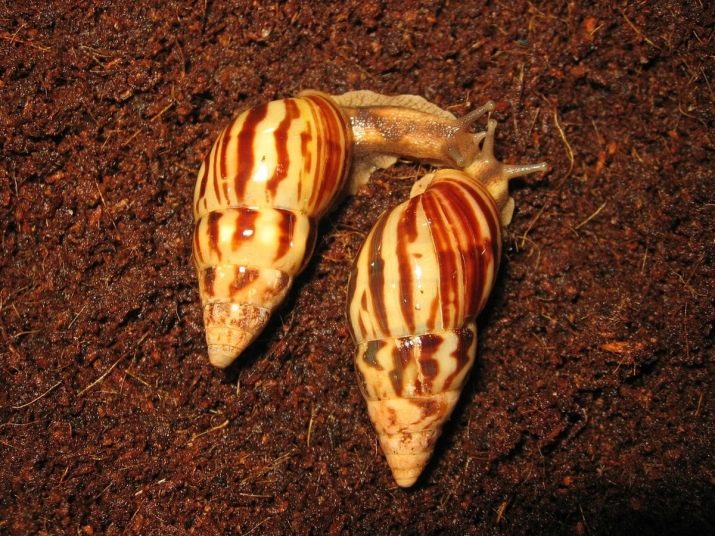
Scutalus
It is a land snail that prefers to settle in Latin America. Adults are up to 15 cm in size. It belongs to a relatively new species, characterized by an unusual shell shape.
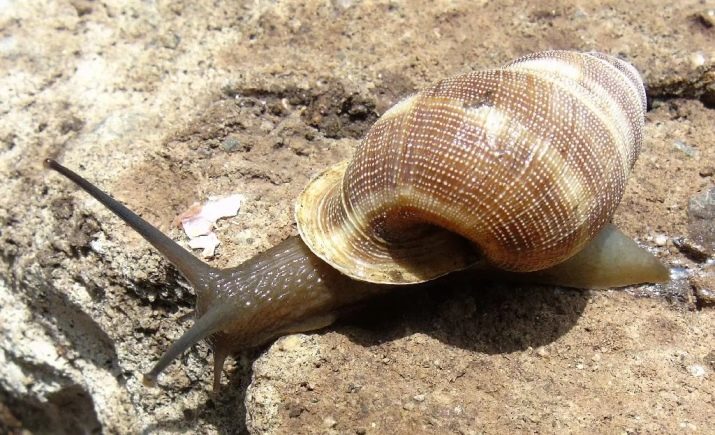
Giant Achatina
These are the largest terrestrial mollusks, the length of which with a shell reaches 39 cm. Currently, Achatina are becoming more and more popular. They reproduce easily, and hobbyists are already taking steps to prevent the species from spreading in uncharacteristic ecological zones. The main diet is plant foods.
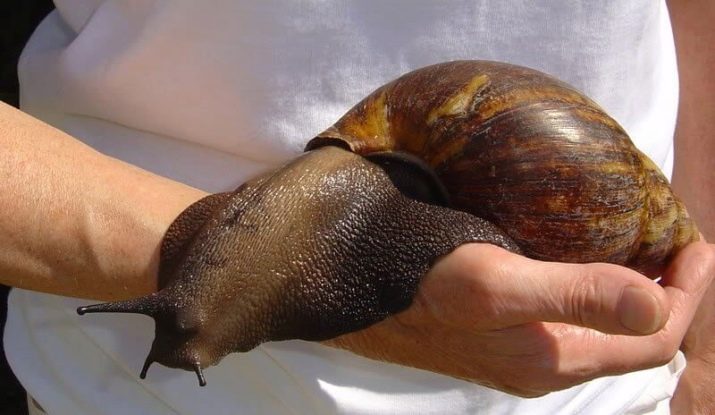
Florida horse snail
This is a very large snail with a shell length of up to 60 cm. It belongs to the largest aquatic molluscs. Lives in the waters of the Atlantic Ocean.

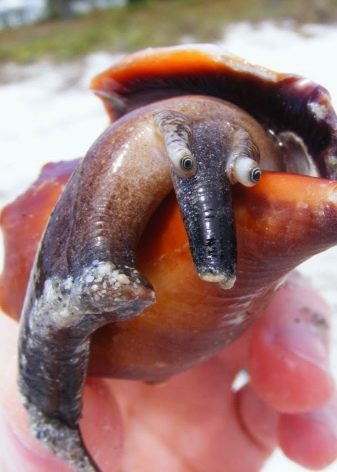
Record snail
Special attention should be paid to snails, which have become champions due to their impressive size.
For example, the largest water snail is considered to be the giant Australian trumpeter... Its weight is 18 kg, and the height of the shell is 91 cm. This creature lives in the vastness of the World Ocean. An individual is even known, the size of which was 110 cm. The external feature of the trumpeter is a five-turn orange shell, which darkens with age.
It looks like a pretty giant mollusk, behind which pretty appearance is a real predator. The main diet of the trumpeter is made up of worms and corpses of marine animals deposited on the bottom, and the mollusk does not feed on plants.
This animal is considered the only large snail leading a hunting lifestyle.
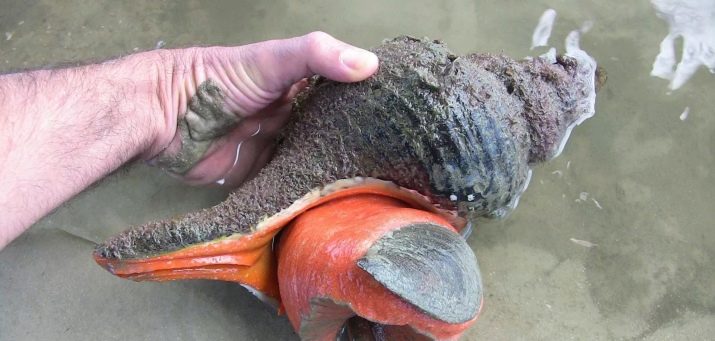
The tiger Achatina is called the largest land snail. Its habitat is Africa. This mollusk is interesting not only for its huge size, but also for its unique appearance.
The largest individual of this group was captured in 1976. The height of its shell was 275 mm, and the snail weighed about 1 kg. However, another slightly smaller individual of the same species got into the Guinness Book, the height of the shell of which was 273 mm, and the weight - 900 g.
Tiger Achatina got its name for its amazing color - it has an orange shell with brown or black stripes. This color is reminiscent of a tiger. The mollusk is an omnivorous species and can eat both a plant and the carcass of another animal.
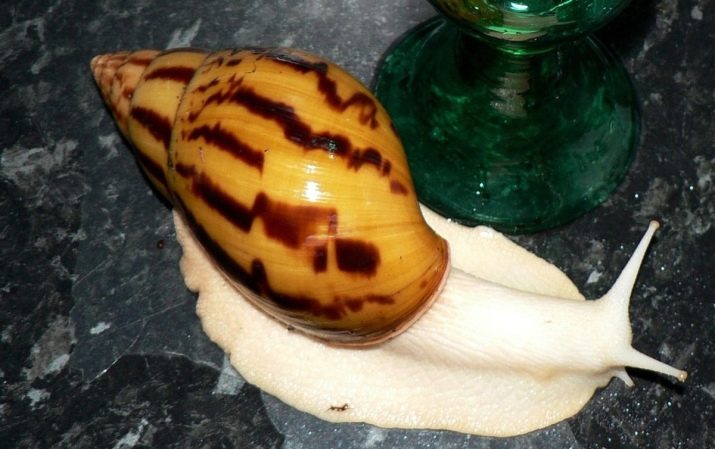
How to contain?
It is better to consider the features of keeping large snails at home using the example of the most common variety - the giant Achatina.
It is customary to settle this animal in an aquarium with a lid in which ventilation holes are made. Aquarists advise using coconut substrate as substrate. It is recommended to cover the filler with a layer of 4-6 cm - mollusks like to bury themselves. To create comfortable conditions, the bottom can be laid out with moss, the container can be supplemented with branches with lichen, and green spaces can be planted. Even the cultivation of cat grass is allowed.
It is very important to maintain high humidity in ulitaria: 80-90%. The required indicators will allow you to achieve daily spraying of the walls with water from a spray bottle.
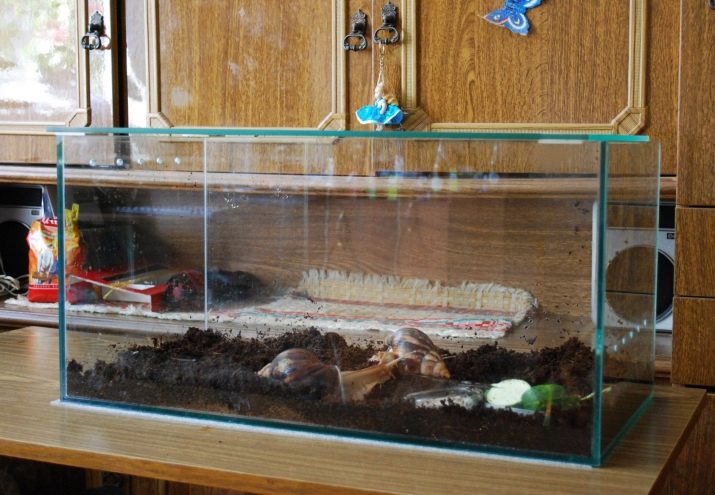
You should organize a saucer of water and a pool - these things will not only be useful for the snail, but will also be able to maintain humidity in the terrarium. It is important not to overdo it with spraying. Achatina will inform about the increased humidity by her behavior - she will sit on the wall all the time. If the snail is hiding in the shell, then, on the contrary, it probably feels a lack of moisture.
When choosing a terrarium, it is better to choose a volume at the rate of 10 liters per individual. These snails are picky about food, but a responsible owner should diversify the diet to the maximum. For example, the most important element for Achatina is calcium - it participates in the construction of the shell and chitinous tooth, with which the snail collects food.
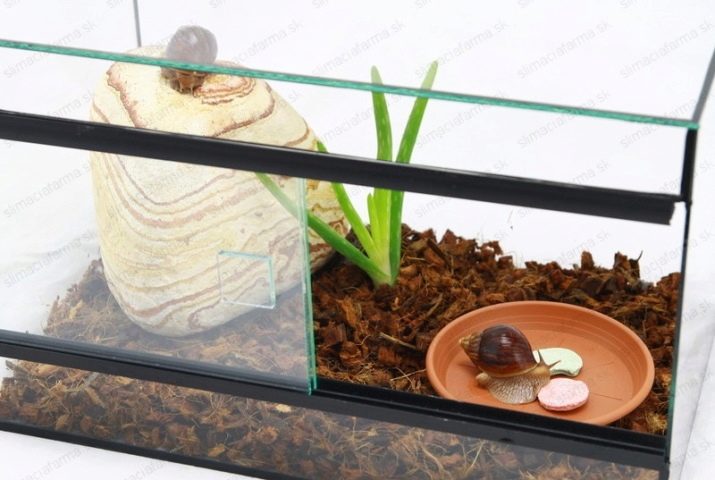
Vegetables allowed for a snail are cucumbers, cabbage, lettuce, boiled potatoes, pumpkin, celery. Fruits - pear, apples, melon, plum, banana. It is also worth including in the pet's menu beans, oatmeal, grass and leaves from the street (they need to be washed before serving), boiled eggs, boiled meat, and dairy products. You should not offer the snail citrus fruits, spicy, salty and smoked foods.
The recommended temperature for keeping a snail is 27-30 degrees. In comfortable conditions, the mollusk will live for 5-7 years and will reproduce well. The specimen has characteristics of both sexes and lays eggs the size of a pea.
If only one pet is kept, then breeding is impossible. But if he had mating before "moving" to a new home, then soon several new individuals may appear in the terrarium. After sexual intercourse, the snail can retain sperm for 2 years and lay fertilized eggs.
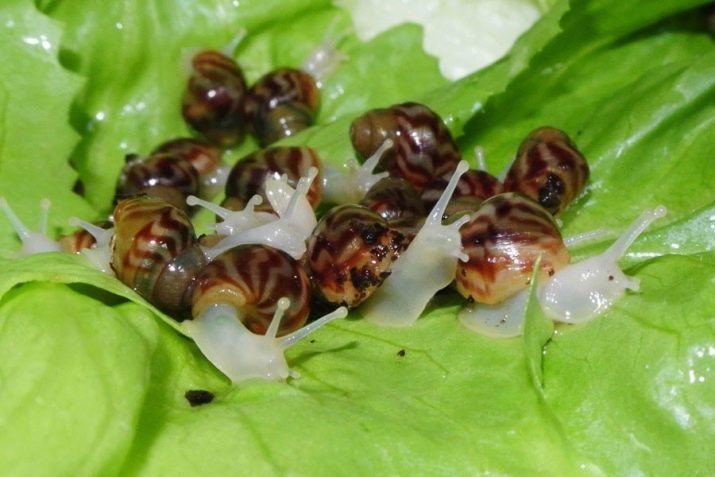
For the largest snails in the world, see below.








